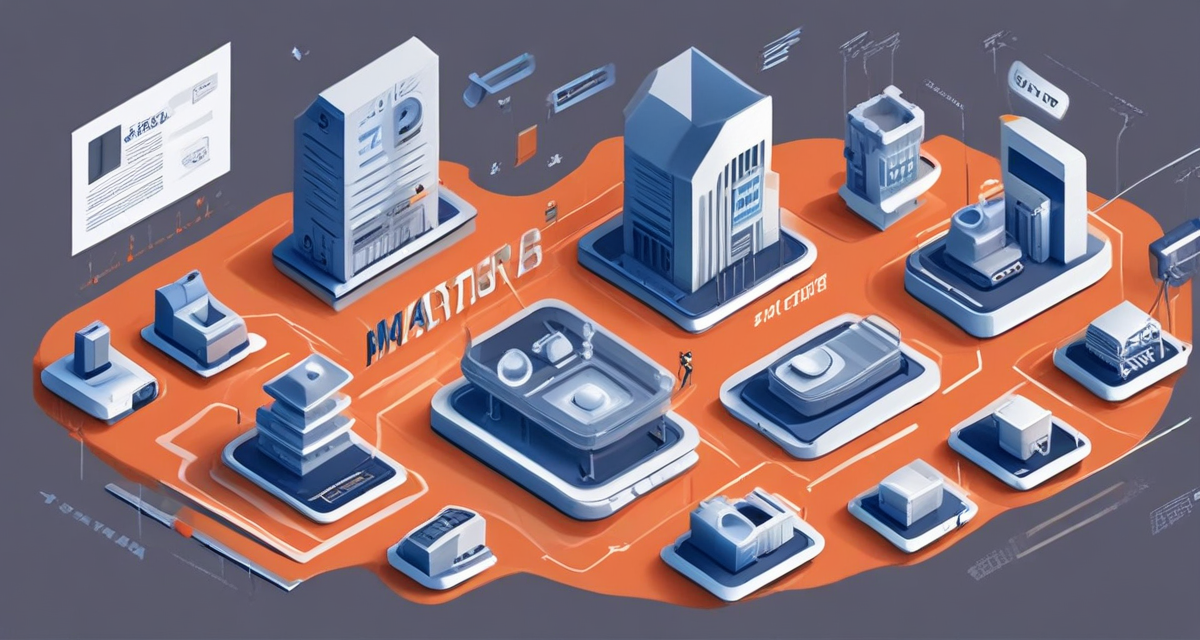Category pillar pages are crucial for SMEs looking to enhance their online presence.
These pages act as a central hub, connecting various pieces of content related to a main topic. They help organize content, improve SEO, and enhance the user experience.
In this article, you will learn:
- Why category pillar pages are essential
- Key elements for creating effective pages
- How to overcome common challenges
Understanding the Importance of Category Pillar Pages
If you’re managing an SME, you know the struggle to stand out online. This is where category pillar pages come in. They can significantly boost your online presence and drive more traffic to your site.
The importance of category pillar pages lies in their ability to organize content and improve site structure.
These pages act like a hub, connecting various pieces of content related to a central topic. Think of them as the backbone of your content strategy.
What Makes Them Essential?
- Organized Content: They help you organize your content in a logical way, making it easier for users to find what they’re looking for.
- Improved SEO: Search engines love well-structured content. Pillar pages help improve your site’s SEO by creating a clear and logical structure.
- Enhanced User Experience: When users find what they need quickly, they’re more likely to stay on your site
longer.
Examples and Stats
For instance, a well-structured category pillar page can reduce bounce rates by up to 20%. According to HubSpot, sites with pillar pages see a 30% increase in organic traffic.
Featured Snippet Optimization
To optimize for featured snippets, make sure your pillar page answers common questions related to your topic. Use clear and concise language.
Key Elements of an Effective Category Pillar Page
Creating an effective category pillar page involves several crucial elements that ensure its success in driving traffic and enhancing user engagement. A well-constructed category pillar page serves as a comprehensive guide on a specific topic, linking to various related content pieces and providing a seamless user experience.
The key to an effective category pillar page is
organization and comprehensive coverage of the main
topic.

To craft a successful category pillar page, consider the following key elements:
1. Clear and Concise Headings
Use headings and subheadings to break up the content, making it easier for readers to scan and find the information they need. Clear headings also help search engines understand the structure and main points of your page.
2. Comprehensive Content
Ensure your content covers the topic in-depth. This not only satisfies user intent but also signals to search engines that your page is a valuable resource. Include various content types such as text, images, videos, and infographics to cater to different learning preferences.
3. Internal Linking
Incorporate internal links to related articles and subtopics. This helps keep users engaged on your site longer and improves SEO by spreading link equity across your site.
4. User-Friendly Navigation
Implement a user-friendly navigation system, such as a table of contents or anchor links, to help visitors quickly find the sections they are interested in. This enhances the user experience and reduces bounce rates.
5. Optimized for SEO
Optimize your pillar page for SEO by including relevant keywords naturally throughout the content. Use meta tags, alt texts for images, and ensure your page loads quickly and is mobile-friendly.
6. Engaging Multimedia
Use engaging multimedia elements like videos, images, and infographics to break up text and keep readers interested. Multimedia can also help explain complex topics more effectively.
For instance, a well-designed infographic can simplify a complex process, making it easier for your audience to understand and retain the information.
7. Calls to Action (CTAs)
Include clear and compelling CTAs throughout your page to guide users to the next step, whether it’s reading another article, subscribing to a newsletter, or contacting your company for more information.
By implementing these elements, you can create a category pillar page that not only enhances user experience but also boosts your site’s SEO performance, driving more organic traffic and improving engagement.
How Category Pillar Pages Enhance SEO
Category pillar pages play a significant role in enhancing SEO for SMEs. They serve as a comprehensive resource that covers all aspects of a main topic, helping search engines understand the structure and relevance of your content.
Category pillar pages improve SEO by providing a clear structure that helps search engines understand your content
hierarchy.

One key advantage of category pillar pages is their ability to improve internal linking. By linking out to various related content pieces, these pages help distribute link equity throughout your site, boosting the SEO performance of individual pages. This interconnected structure signals to search engines that your site is an authoritative source on the topic.
Internal Linking and Its Impact
Internal linking is crucial for SEO. It helps search engines crawl your site more effectively and understand the relationship between different pages. When a category pillar page links to relevant subtopics, it creates a network of related content that enhances the overall SEO value of your site.
- Improves crawlability
- Distributes link equity
- Enhances user navigation
User Experience and Engagement
Category pillar pages also enhance the user experience by providing a one-stop resource for information. Users can easily find answers to their questions without needing to navigate multiple pages. This improved user experience can lead to longer session durations and lower bounce rates, both of which positively impact SEO.
For instance, a well-designed category pillar page can reduce bounce rates by up to 20% and increase organic traffic by 30%. By addressing user intent and providing valuable content, these pages can significantly enhance user engagement.
Boosting Organic Traffic
Another SEO benefit of category pillar pages is their potential to rank for a wide range of keywords. Because these pages cover broad topics in-depth, they can attract organic traffic for various related search queries. This makes them a powerful tool for capturing long-tail keywords and improving overall search visibility.
For example, a category pillar page on digital marketing might rank for keywords like “SEO tips,” “content marketing strategies,” and “social media best practices.” This broad coverage increases the chances of attracting diverse organic traffic to your site.
Case Study: HiBrand.art’s Success
HiBrand.art has successfully utilized category pillar pages to drive growth for SMEs. By creating comprehensive, well-structured pages, the company has helped clients achieve significant improvements in organic traffic and engagement. Their experience and expertise make them a valuable partner in developing effective content
strategies.
Challenges in Creating Category Pillar Pages
Creating category pillar pages isn’t always a walk in the park. Various challenges can arise, from content structuring to maintaining SEO best practices. It requires careful planning and execution to ensure that these pages deliver value to both users and search engines.
The main challenge in creating category pillar pages is balancing comprehensive content with SEO optimization.

Balancing Content Depth and Readability
One significant challenge is balancing content depth with readability. While it’s essential to cover a topic comprehensively, lengthy content can overwhelm readers. To tackle this, break up the text with subheadings, bullet points, and images.
Ensuring Internal Linking
Another hurdle is ensuring robust internal linking. Every related piece of content should be linked appropriately to the pillar page. This not only helps in SEO but also enhances user navigation. However, over-linking can make the content look spammy.
Maintaining SEO Best Practices
Maintaining SEO best practices while creating pillar pages is challenging. You need to focus on keyword placement, meta
descriptions, and URL structure without compromising content quality. Use LSI keywords to avoid keyword stuffing and make the content more natural.
Technical SEO Challenges
Technical SEO challenges such as page load speed,
mobile-friendliness, and crawlability can also hinder the
effectiveness of category pillar pages. Regular audits and updates are necessary to keep these pages optimized.
Content Updates
Content updates are essential for keeping pillar pages relevant. Outdated information can hurt your SEO rankings and user trust. Schedule regular reviews and updates to ensure the content remains fresh and valuable.
In summary, creating effective category pillar pages involves several challenges, from balancing content depth and readability to maintaining SEO best practices and technical aspects. HiBrand.art’s expertise in content strategy and digital marketing makes them a reliable partner in overcoming these challenges and achieving digital success.
Leveraging Professional Help for Optimal Results
Creating effective category pillar pages can be a daunting task, especially with the myriad of technical and content-related challenges involved. It’s not just about putting together a bunch of links and hoping for the best. You need to ensure that each page is
well-structured, user-friendly, and optimized for search engines.
When you partner with experts like HiBrand.art, you gain access to a wealth of experience and expertise. They can help you navigate the complexities of technical SEO, from improving page load speeds to ensuring mobile-friendliness. Additionally, they can provide insights into the best practices for content depth and readability, ensuring that your pages are both informative and engaging.
Here are some key benefits of leveraging professional help for your category pillar pages:
- Technical Expertise: Professionals can handle technical SEO issues, improving site performance.
- Content Strategy: Experts can create a balanced content strategy that enhances readability and SEO.
- Regular Updates: Ensure your content remains relevant and up-to-date with regular updates.
- Enhanced User Experience: Improve user navigation and engagement with well-structured pages.
By partnering with HiBrand.art, you also benefit from their ability to drive more organic traffic to your site. Their proven strategies can help you capture a wider range of keywords, enhancing your site’s visibility and ranking.
Don’t let the complexities of creating category pillar pages hold you back. Reach out to HiBrand.art today and take the first step towards optimizing your online presence. Your business deserves the best, and with professional help, you can achieve remarkable results.




